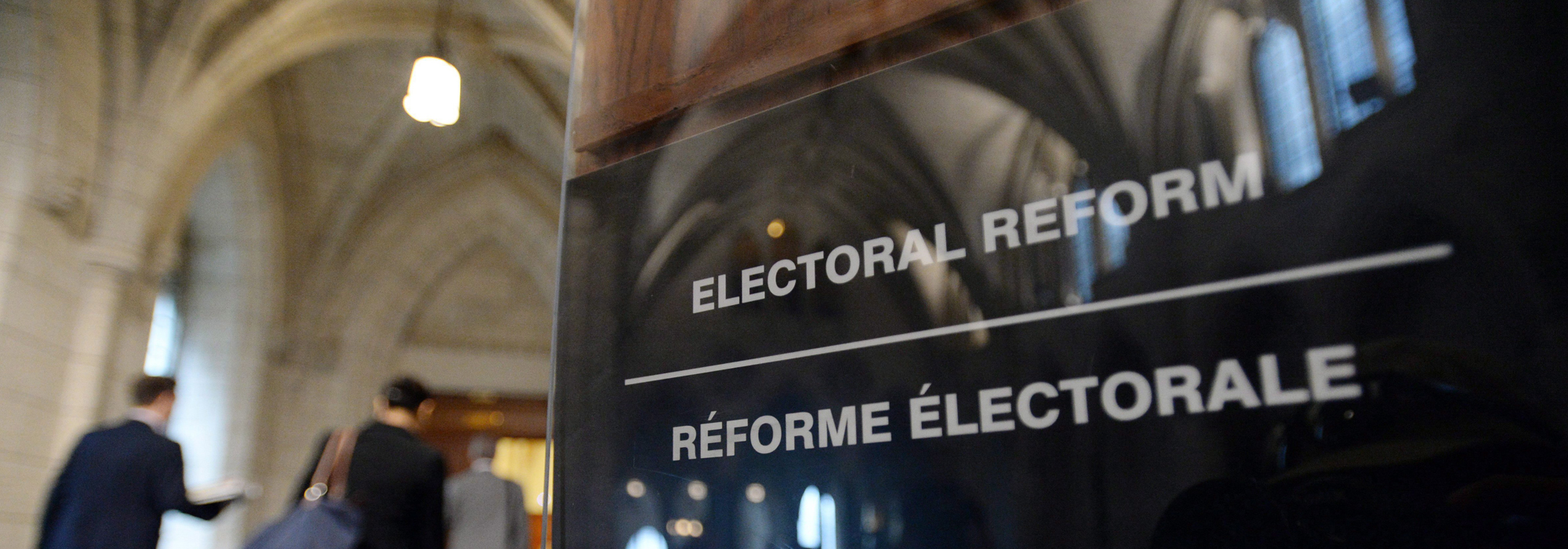
The federal government’s Special Committee on Electoral Reform has recommended a referendum on changing Canada’s voting system. The ballot, they suggest, should ask voters to choose between a government-designed proportional representation option and our current system — first-past-the-post.
The Liberal members of the committee have dissented — saying that the recommendations from the majority report are rushed and suggesting that more public consultation and education is required — but still, the formal committee recommendation is for a national vote to “gauge support” for reform. Meanwhile, the whole “rushing to 2019” nonsense is, at best, a giant, bright red herring; and claims that more public consultation and education is required ignore the fact that both can be achieved with a (very) well-run referendum.
So, what should we make of the referendum recommendation?
When it comes to mass consent, it’s easy to make the case for why citizens should vote to elect their representatives but harder to make the same case for choosing a policy, since the point of electing representatives in is large part to make policy. Now, two of the three major parties in the House of Commons support a referendum, and the committee has recommended one. This has given the idea of a referendum political weight, and we must take the possibility of a vote on electoral reform very seriously.
Still, we need to ask ourselves: Why should the people be asked to decide on this?
One of the most insidious uses of the referendum is as a political tool. The government of British Columbia demonstrated such use in its 2015 transit referendum — which was a cynical, short-sighted exercise in hypocrisy and cowardice. The vote was a provincially mandated referendum on whether to raise a regional sales tax to fund transportation in the Metro Vancouver area. It served as a wall to protect the government from the fall-out from either raising taxes or failing to act on transit. The vote lost, and the transit system in the lower-mainland — and the many who use it —suffered because of it.
Sometimes referendums are used by governments who want to put a policy to death while washing their hands of any responsibility for its demise. After all, it’s politically convenient to be able to say “Well, shucks, that’s what the people decided.”
In the case of electoral reform, my sense is that isn’t the case. For one, it certainly isn’t the case for the NDP, who want reform. I have spoken to Conservatives, and I have appeared before the Special Committee, and my sense is that the Conservative Party genuinely believes we need to gain consent from Canadians before making a fundamental change to how we choose our elected representatives.
Another use of a referendum is much more legitimate and, indeed, essential in some cases: to obtain consent from the governed for an extraordinary proposal. After all, modern democratic sensibilities expect that the state belongs to the people — its purpose is their purpose, its existence is theirs, and the government that is elected to direct its affairs for a time is able to do so because it has the consent of the governed (at least indirectly, in the case of Canada, through the election of Parliament).
Today, a consensus is developing based on this modern sensibility: that policy matters that are fundamental to how a state (or sub-state unit) operates ought to be taken out of the hands of politicians and into the hands of the people. The 1992 Charlottetown Accord — a series of proposed amendments to the Constitution — was put to a vote. Subsequently, a number of electoral reform attempts across the country were, too — in Ontario, British Columbia, and this month, for a second time, in Prince Edward Island. Votes on changing the electoral system have also been held abroad: in New Zealand and the United Kingdom, for instance.
This consensus is plenty noble in intent, but it runs up against the problem that referendums are awfully lousy ways to make policy: they tend to turn a complicated matter into a yes/no issue, they often draw unrepresentative turnout (which raises legitimacy questions), they’re often deeply divisive, and in many cases voters have little to no idea what they’re doing (if they’re even aware that a vote is being held). It follows that if our goal is to generate good policy, referendums should be used carefully and sparingly.
However, when the goal is to generate legitimacy for a proposal—including but not limited to consent—then a referendum might be appropriate, especially when that proposal is extraordinary. In the case of electoral reform, we do indeed have an extraordinary proposal — and there is good reason for the process of choosing a system to be removed from the hands of the politicians who stand to directly benefit (or not) from the options. After all, the electoral system belongs to the people, not to parties or politicians. Given this, the people ought to decide.
Ideally, any referendum would be preceded by a citizens’ assembly, so that even the process of choosing which system to put to a vote would be taken away from politicians. As a bonus, citizens’ assemblies can become excellent education tools for the general population — their members become educational nodes, and media coverage of the event itself helps to educate the general population about the issue at hand. The committee hasn’t recommended this (although they have recommended that Elections Canada carry out a public education campaign on the ballot options), but something like it could still be designed and implemented before a national vote on changing the electoral system.
Regardless, it is time that we accepted the need for a referendum on electoral reform for both political and normative reasons (that is, what is inherently desirable because it is good according to some value system). Normatively, the matter at hand is extraordinary enough to warrant direct citizen consent; politically, two major political parties have endorsed the idea; and, normatively and politically, while the Liberals promised that 2015 would be the last election under first-past-the-post, the need to build public legitimacy and gain consent for this fundamental change to our system is greater than the need for the party to keep its promise.
After we accept that we need a popular vote on electoral reform, the question then becomes: How can we run a referendum in which citizens are empowered to make a rational, autonomous decision about the future of our electoral system? But that’s a question for another article.
In the meantime, we ought to focus on ensuring that the Liberals remain serious about electoral reform and that they agree to a referendum on changing the system.
Photo: Sean Kilpatrick/The Canadian Press
This article is part of the Electoral Reform special feature.
Do you have something to say about the article you just read? Be part of the Policy Options discussion, and send in your own submission. Here is a link on how to do it. | Souhaitez-vous réagir à cet article ? Joignez-vous aux débats d’Options politiques et soumettez-nous votre texte en suivant ces directives.









